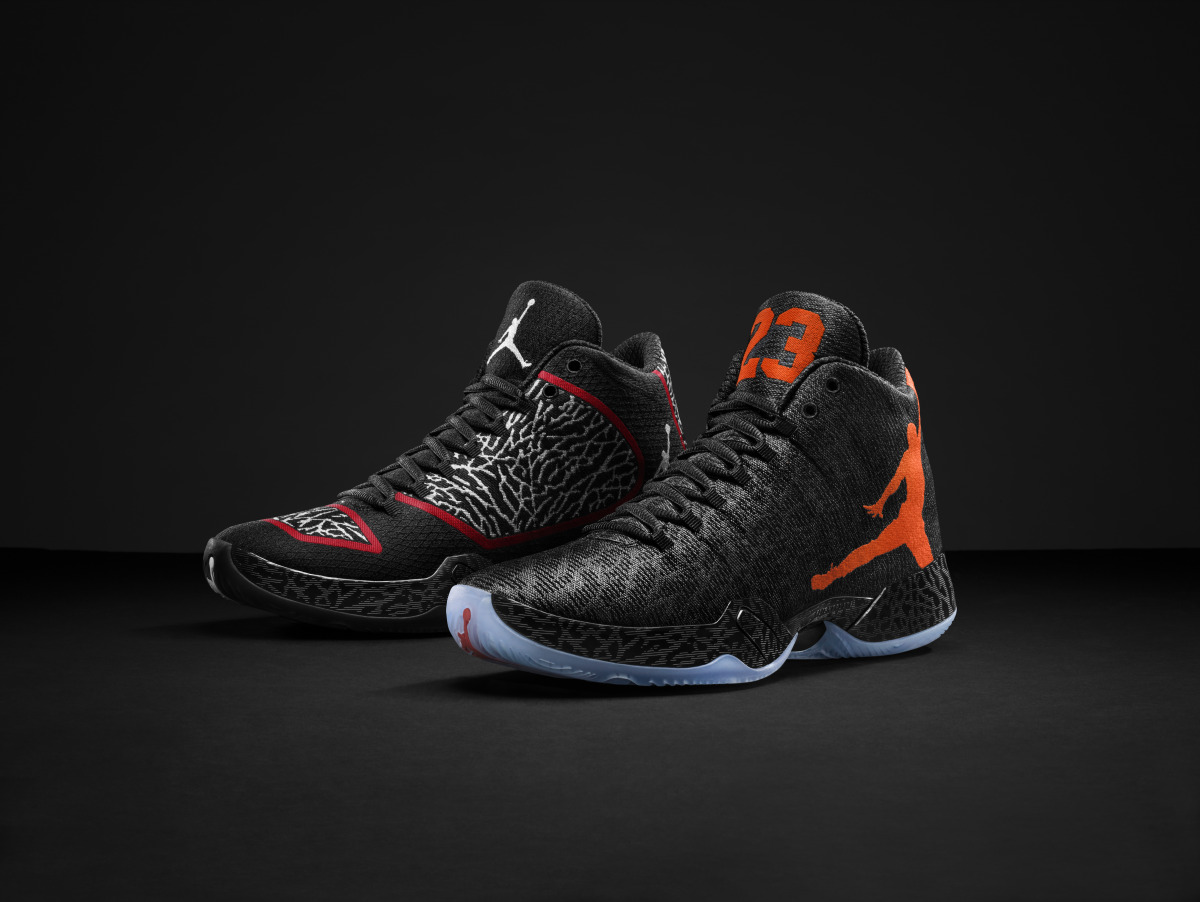Sports Business: The latest Brand Jordan signature sneaker, the Jordan 29, unveiled in New York, set to hit stores in September:
Via Jeffrey Martin
Beaverton, Ore. – Tinker Hatfield is discussing his latest creation, the Air Jordan XX9, and he wishes there were a fancier origin story, something more romantic about the lightest shoe in the line. He has designed 19 versions of Nike’s most iconic shoe, drawing inspiration from motorcycles, race cars and airplanes.
Now, he’s tasked with topping himself.
He, like Nike and subsidiary Jordan Brand, is competing against an incredibly popular and lucrative past. But the challenge is to create something as equally enduring for the future.
“I was literally thinking about designing more and more with computer technology in mind and I was thinking about pixels,” Hatfield told USA TODAY Sports. “High-definition? Sort of, yeah.”
The XX9, introduced Thursday in New York City, features 25 million pixels on its performance woven upper. It’s crafted by Italian artisans using a two-headed jacquard weaving machine normally for high-quality labels or silk neckties — definitely not shoes. It goes beyond appearance, however. From a structural standpoint, each pixel has a specific function and reason for being.
“What’s great about the woven technology — it stays in shape,” says Brian O’Connor, Jordan Brand head of marketing. “Leather pulls, but this doesn’t. You get a new shoe every time. It never loses its elasticity.”
More than 9,700 weft yarns span from side to side on the XX9, comprising a single layer that incorporates all of the typical components of a shoe — while providing strength without restricting movement or adding weight.
“We talk about this upper as a tapestry, a tapestry for the foot, a way of telling a story,” says Dave Schechter, Jordan Brand vice president of global footwear. “The first woven shoe — that’s never happened. It will be — it is — the lightest Air Jordan ever.
“When you put it on, it molds to the foot, gives a real personalized fit.”
This weekend in the NBA playoffs, Oklahoma City Thunder guard Russell Westbrook will wear the XX9. It will be available for purchase in September for $225.
In mid-March, USA TODAY Sports visited Nike’s expansive campus and was shown the XX9, first at the Michael Jordan Building, where the Jordan Brand is housed, and then in a tucked-away room in the Mia Hamm Building. It was an unprecedented gesture by the sports footwear and apparel giant, which usually prefers to release its shoes to the public at once.
Nike has never needed to grant a sneak peek before — and, based on market share, it still doesn’t. According to SportsOneSource, which tracks market retail figures, Nike and Jordan Brand in 2013 accounted for 92% of all basketball shoes sold in the USA.
That share grew to 94.7% in March, when three Jordan re-issues — the 3, 10 and the 9 — were among the top seven models in sales.
“The Air Jordan should be, and has been in the past, the pinnacle basketball shoe in the marketplace,” says Larry Miller, Jordan Brand president. “Our focus now is on making sure that is the case moving forward.”
It’s an indication of how they view the magnitude of this launch.
“They’re looking to see how they broaden their base away from retro,” said Matt Powell, analyst at SportsOneSource. “The recent releases haven’t been doing commercial numbers. They’ve sold out OK, but when you stack them up against the better retro styles, the numbers are quite small.”
There is a balance, though, in staying true to what the Air Jordan was intended as and what the shoe has become. It debuted in 1985 and was designed for Jordan with performance in mind. Because Jordan was stylish on and off the court, that same style was infused into his signature shoe, which has spawned 29 editions in all.
“Performance is always most important,” Jordan wrote via email, “but style is part of the soul of the game.”
But people aren’t playing in their Air Jordans, especially the retros.
As for recent releases, last year’s XX8 is a prime example of failing to maintain that balance. Hatfield says the shoe, with its Flight Plate technology designed to maximize responsiveness between the heel and the forefoot, tested through the roof.
Its radical looks — mainly its zippered outer sheath — were a nod to Nike’s longstanding commitment to pushing the industry boundaries, and it created a ton of buzz once photos circulated online.
There was only one problem.
“It was introduced during the (NBA) All-Star break, there weren’t so many made … and it all adds up to guess what? Not that many people ever saw them,” Hatfield says.
The Flight Plate returns on the XX9, tweaked to add what Nike refers to as a tendril — essentially a bridge that links the heel and the forefront, eliminating a “slap” sometimes heard when running.
“The idea here is the structure,” says Rob Bruce, Nike’s global innovation design director. “We’re not adding multiple layers — we’ve weaving them. … It’s super-integrated, very, very reductive and it’s ballistic as hell. It was challenging to engineer, but much easier for the factory to make.
“The precision has gone up, the efficiency has gone up and what you’re going to end up with is a higher level of craftsmanship.”
The artisans in Italy did most of the work, plugging a Hatfield sketch into their proprietary software and creating a pattern to, well, tinker with — all within a day or two.
“Not hand-made, but machine-built and crafted by man,” Bruce says. “It’s super lightweight, has a supernatural fit. It’s extremely breathable — it actually transports moisture better than a synthetic leather.”
Westbrook has been working out in the XX9 for weeks. His feedback to Schechter and other Nike/Jordan Brand executives was the shoes were so comfortable, he didn’t have to break them in.
That’s literally by design, O’Connor says: “We use the term ‘right weight’ — this shoe is tailored for flight.”
In the short term, Hatfield is convinced the XX9 will resonate with “players who play at a high level and need to move quickly yet need stability.”
Consumers always have the final say.
“This is part of the legacy of the Jordan line,” Hatfield says. “Numerous times over the years, the shoes have not been like any other — over and over and over again. We’re really proud of this one. It’s the most advanced way to make a product I’ve ever seen. … It’s next-level for sure.”
Adds Schechter: “It’s something that should withstand the test of time.”

